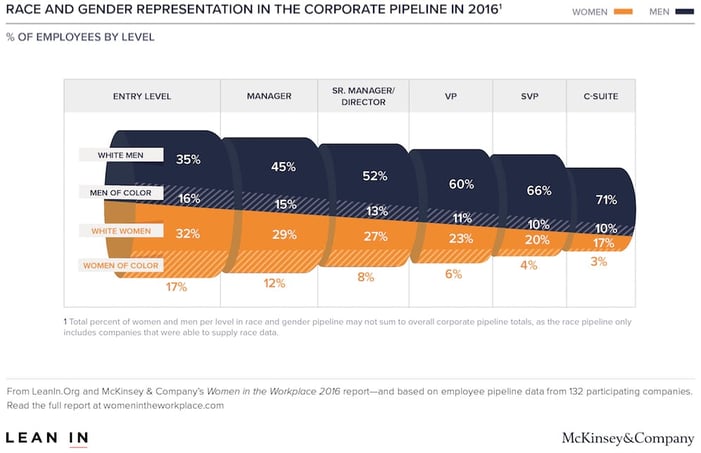The Year of the Woman was a popular label attached to 1992 after the election of a number of female Senators in the United States. The term has also been used with respect to the 2018 House elections, in which a record 103 women were elected, 90 of whom were Democrats. Some have proclaimed that 2020 was also the “Year of the Woman” due to more political gains in office. Consider this quote from The Wall Street Journal:
• Women voters were responsible for Mr. Biden’s victory. Women made up 53% of the electorate, according to the AP VoteCast survey of more than 110,000 voters, and they went for Mr. Biden by a substantial 55% to 44% margin. Mr. Trump, meanwhile, won among men, 52% to 46%. In sum, the entire Biden winning margin came from women.
• Sen. Kamala Harris will become the first woman to serve as vice president. Hillary Clinton was the Democratic nominee in 2016, of course, and twice before—with Democrat Geraldine Ferraro in 1984 and Republican Sarah Palin in 2008—women held the running-mate spot. The third time was the charm.
• A record-shattering number of Republican women were elected to the House. At least 17 new Republican House members are women, with two races involving GOP women still undecided. That means Republicans nearly doubled their previous record of nine new Republican women elected in 2010; as a result, the number of GOP women in the House also will more than double.
• For the second straight election, a woman was the manager of the winning presidential campaign. In 2016, it was Kellyanne Conway for President Trump. This year it was Jen O’Malley Dillon for Mr. Biden.
And yet with so much power in the political class, that could not be said in corporate America. Consider the following stats:
- As of November 2020, there were only 40 women CEOs of Fortune 500 companies. [CNN]
- Women of color represent 18% of entry level professionals, 6% of vice presidents and 3% of c-suite executives. [Lean In & McKinsey 2020]
- Companies in the top quartile for gender diversity on their executive teams were 25% more likely to experience above-average profitability than companies in the fourth quartile. [McKinsey 2020]
- Companies with female CEOs and CFOs produced superior stock price performance and profitability. [S&P Global 2019]
With so much gender disparity, what could or should be done to even the playing field? Should a quota be mandated by law to fix this? I don’t think so because it has been tried before and is actually ongoing.
Will mandating female representation on corporate boards increase the likelihood of female ceos?
In 2012, a new law was decreed in the Netherlands that corporate boards should be composed of at least 30% of women. The legal ramifications were discussed in the whitepaper - 30 percent Women on Boards: New Law in the Netherlands (2012). The abstract from that paper reads this way:
The lack of upward mobility for women is an issue in many European countries. Gender segregation in the labor market, including the failure to promote women to senior posts, is one of the subjects addressed in a new act that will become effective mid 2012 in the Netherlands. The Act will amend Dutch corporate law. It requires large companies to have 'gender balanced' boards, comprising at least 30 percent women and 30 percent men. This article elaborates on the Act's legislative history, content, application and enforcement possibilities. It puts it in the perspective of Corporate Social Responsibility (CSR) and of gender equality as a human right as promoted in the Convention on the Elimination of All Forms of Discrimination against Women. Finally, the article compares the Act's provisions with the Dutch Corporate Governance Code because the latter also contains provisions on gender in board composition.

In 2016, there were rumblings that the law had not produced the results desired. As a result, more stringent methods were proposed as discussed in the Dutch website – DiversityMine’s article, “Quota in disguise: The Dutch statutory target for women on boards.” Here are some quotes from that article.
…she presented a proposal to the cabinet, which was approved. The suggested bill would extend the statutory target that expired 1 January 2016 to the end of 2019. It regulates that companies that fail to have at least 30% of women and at least 30% of men on their management and supervisory boards must outline reasons in their (public) annual reports. The Dutch government calls this legal principle ‘comply or explain’.
Despite being mandated by law, the change in industry results were “extremely disappointing.”
The latest report from the government’s own corporate monitoring committee shows no stock exchange listed company met the 30% target (for women) by September 2015. Of all companies that fall under the target, 14% had at least 30% women on their executive boards and 18% met the target in terms of their supervisory boards. However, 75% of executive and 63% of non-executive boards had no women. But, in the course of the first half of 2015, 70% of newly appointed supervisory board members were female. Bussemaker was only quoted on the absolute numbers calling them “extremely disappointing.”

One Diversity expert suggested that one stumbling block is how businesses focus on results rather than diversity representation.
According to Diversity expert Michael Stuber, who has analysed the legal, organisational and cultural dynamics around quota, targets and other metrics in Europe and the U.S., this example shows the prevailing gap between the political perspective and the business dynamics. “Politics talks about rights and representation, while business focuses on pipeline and potential,” he comments.
By 2019, the law was discussed on the Dutch website Free West Media, albeit mostly from a political perspective. In their article, “Dutch quota for women on supervisory boards unpopular,” pro and con arguments were made.
Rabobank Amsterdam chairwoman and university professor Barbara Baarsma says she opposed quotas because they are a last resort. “They don’t root out the real problem of too much part-time work. Just 26 percent of women work full time, compared with 73 percent of men,” she explained.
Quotas can actually have the opposite effect, she added. “Women end up being asked if they are in the top job because they are good or because they are a woman… I would rather we put more effort into the position of women at the bottom end of the labour market. They have far more problems.”
But economist Helen Mees told the Volkskrant that the introduction of quotas benefits all women. She referred to the situation in Norway, where a 40 percent female quota was introduced in 2006.
The Dutch business daily, the NRC highlighted in its analysis that the new quota was a compromise, despite being described by emancipation minister Ingrid van Engelshoven as a “historic step” because some 30 of the 88 listed companies in the Netherlands already meet the target.
As of 2020, there was more progress made along the lines of what was intended. The website Dutch News made the following comments.
The percentage of women on executive boards at the 94 companies studied has risen from 8.5% to 12.5% over the past year, while women now account for almost 30% of supervisory board members. It is the second year in a row that there has been a significant increase in female representation and Luckerath says she regards this as a breakthrough. ‘Last year, the institutional investors lobby group Eumedion said it was making appointing women a key issue, and I think this has had an effect,’ she told broadcaster NOS. ‘It is slowly becoming embarrassing if a company board only consists of men.’

Perhaps as a result of this progress, government plans to raise the quota higher.
The government is currently working on legislation which would ensure 33% of listed company supervisory boards members are female and 51 of the 94 now meet that criteria. Last year, the figure was just 30. The research, which also showed the percentage of foreigners is (much) higher among the female directors than male, does not include companies such as Shell and AirFrance KLM, which have dual listings.
Will increasing the quota lessen the chance of resentment from male counterparts who see the presence of more women as being opportunistic and thereby less regarded and unfair? Will there be an increase in reverse discrimination lawsuits? Will the practice of importing more female workers to meet said quotas cause a backlash reaction from unemployed citizens resenting an influx of immigration labor? Only time will tell.
Female hiring is a pipeline problem
As of January 2020, despite the gains made in female representation as mandated by law, just 4.7% of CEOS at Europe’s top companies are women according to CNBC. Could there be other reasons beyond opportunity that keep women from the C-Suite? According to data from Kellogg Insight developed at Kellogg School of Management at Northwestern University, “data predicts that at least 50 percent of the women graduating from top MBA programs in 2017 will exit the full-time US workforce within 10 years of graduating—either because they choose to step out or are “forced out.” So, with this we know that in part, the issue is a matter of pipeline. Said disruption was also acerbated by the economic crisis brought on by the coronavirus called some to call the resulting recession - a “shecession,” due to the impact of women in the workplace; marking “a sharp reversal of gains in the labor market” according to the NY Times. In another article by the NY Times, they pointed out the following:
From the start of the pandemic, the job losses among women have been a direct result of the collapse of female-dominated industries like hospitality, education, entertainment and even some parts of the health care system.
But that was not the only thing causing a disruption in the pipeline of female talent. Caregiving was also a determinant. To quote the NY Times further:
As the caregiving burden increased, with many schools and childcare centers still shuttered heading into the fall, many women — particularly white women — made the decision to bow out of the workforce. Of those who left the workforce in September, over 72% were women. The labor participation rate in September among white women ages 20 and older was 56.3 percent, down from 58.3 percent in the same period last year. For Black women, it was 59.8 percent, down from 62 percent last September, and the participation rate for Hispanic or Latina women was 57 percent, down from 61 percent a year earlier.

The pipeline issues stem from men dominating management ranks, even in largely female entry-level workforces. Women have to assemble their own career ladder, with upper level nurturing trying to box them into people-related roles (HR, administration, or legal) that aren’t profit-generating areas and are rarely a path to running a company. And when it comes to the notion of women shifting out of those roles, there’s the ever-present “They’re really good at that, let’s keep them there” mentality.
Where the pipeline also fails is providing women the same career advice as men. According to this WSJ article, nearly half the men reported getting detailed advice on how to chart their path to a P&L (profit-and-loss) role, compared with just 15% of women surveyed. Men are also three times more likely to be encouraged to consider a P&L role. And it’s not that women don’t get the career advice because they simply don’t want to advance. According to the WSJ, at every career stage, women report they want to be promoted/ask for promotions at the same rate as men.
When it comes to the corporate pipeline, men and women are represented fairly equally at entry-level, but those numbers shift drastically the higher up the pipeline we go with female representation growing greatly overshadowed by male representation. According to this study released by McKinsey & Co and Lean In, for every 13 men who get promoted to their first “boss” job, only 10 women do the same. Because women are underrepresented at first-level management, it’s only natural that further up the ladder we see fewer and fewer women in leadership roles, ultimately resulting in a small pool of female CEO candidates.

This is why the quota initiatives mentioned earlier failed. How can you be sure you’re getting the right person for the job when your candidate pool is so small? In order to hire a great female CEO, you need a great pool of female CEO candidates to choose from, and in order to get that large pool, the corporate pipeline needs better nurturing from the very bottom. Maybe there was a woman whose career wasn’t nurtured as fairly as her male colleagues, who could’ve been the best CEO the company ever saw, but never came close because she was just so good where she was in the company to give her any other opportunity.
Female hiring is a bias problem
To recap, women are volunteering themselves out of the workforce due to economic crisis, caregiving burden or simply opting out. Those are only a portion of the whole picture. The other part, the “forced out” part (as referenced earlier by the Kellogg Insights data) is another concern altogether because it plays into bias and company politics which are challenging to monitor and regulate. For an example of bias, a Lean In/McKinsey & Company survey in 2016 points out that assertive women are often penalized.
The bad news is that women who negotiate are disproportionately penalized for it. They are 30 percent more likely than men who negotiate to receive feedback that they are “intimidating,” “too aggressive,” or “bossy” and 67 percent more likely than women who don’t negotiate to receive the same negative feedback. Moreover, despite lobbying for promotions at similar rates, women are on average less likely to be promoted than men.

Unconscious bias plays out even in the employee-manager relationship. This same survey reports that managers are about 10% more likely to hesitate in giving difficult feedback to women than men because they're "concerned about an emotional breakdown," and that women are 20% less likely than men to say their manager gives them that difficult feedback. Without critical feedback, women aren’t able to improve their performance and advance at the rate they’d otherwise be able to.
There is also subtle bias as was discussed in Harvard Business Review.
…subtle discrimination is damaging because there is little or no legal recourse. This reality was highlighted recently when Ellen Pao lost her case against her former employer, venture capital firm Kleiner Perkins Caufield & Byers. In her testimony, Pao cited several instances of subtle gender bias at the firm, including being designated as the note taker during meetings, being disadvantaged as a result of her pregnancy, and feeling pressured to balance assertiveness with warmth because of her gender. After the five-week trial, a jury of six men and six women concluded that none of Pao’s claims had legal merit. This is consistent with our analyses of discrimination cases in federal court dockets: Only overt and intentional forms of bias (not subtle and unintentional ones) were associated with decisions favoring plaintiffs.
Fixing the female CEO issue
So, what is the answer to this complex issue? As evident by Europe, mandating a female quota on corporate boards is not the answer because they still have so few female CEOs. Perhaps, a coalition of progressive leadership is the answer? The Paradigm for Parity movement is a coalition of business leaders dedicated to addressing the corporate leadership gender gap. The coalition is made up of CEOs, senior executives, founders, board members, and business academics who are committed to achieving a new norm in the corporate world: one in which women and men have equal power, status, and opportunity. Their ultimate goal is to achieve full gender parity by 2030, with a near-term goal of women holding at least 30% of senior roles.
In addition to their efforts, a more circuitous route to closing the female leadership gap may be for women to create their own businesses with tax incentives to corporations who include said businesses on their vendor lists. And maybe add to that, some tax code changes; at least in the USA. And speaking of entrepreneurial endeavors on the global stage, as challenging as it may be to close the gender parity gap in Fortune 500 companies, America leads the way in top 10 countries with female entrepreneurs.

Mandating laws will not close the gender gap, the solution is to fix the pipeline of female talent which is its own challenge; women will continue to opt out due to personal choice and economic hardship out of their control. However, they will also have to contend with the biases inherent in working with male colleagues who do operate with different mindsets. And while there are organizations like “Paradigm for Parity” addressing the issue, the surest way to have female CEOs is for women to start their own businesses. According to the nonpartisan political watchdog website - Gender Watch, a close evaluation of issues to male and female voters brought this conclusion.
In a June 2018 national, online survey of 1,100 Americans using Qualtrics Panels, I asked Americans to indicate whether a range of issues was of critical importance to them personally, one among many important issues or not that important of an issue.
Among likely voters —those Americans who said they are absolutely certain to vote come November, concerns about gender equality take a back seat to many other issues for both men and women. Roughly 4 in 10 women say gender equality is a critical issue of importance to them, compared with just 32 percent of men, a difference that is statistically significant at the bivariate level.
 These comments suggest to me that gender equality is not going away because 40% of women still prioritize it. Obviously, mandating laws will not close the gender gap. The solution is to fix the pipeline of female talent, a challenge each company must address. Women will still face factors preventing them from moving upward that we can’t address such as economic hardship or opting out of work due to personal choice, but we can address the inherent biases in working with male colleagues who do not operate in the same mindset as them.
These comments suggest to me that gender equality is not going away because 40% of women still prioritize it. Obviously, mandating laws will not close the gender gap. The solution is to fix the pipeline of female talent, a challenge each company must address. Women will still face factors preventing them from moving upward that we can’t address such as economic hardship or opting out of work due to personal choice, but we can address the inherent biases in working with male colleagues who do not operate in the same mindset as them.
So what can companies do today to tackle their corporate pipelines? We’ve seen organizations like “Paradigm for Parity” address the issues of gender equality and women starting their own businesses to foster an environment for female advancement from the ground-up, but how do existing companies implement the necessary changes to achieve true workplace gender equality? Perhaps IBM’s efforts should be a template for others to follow. IBM empowers women through Women@IBM, a network dedicated to attracting, retaining and developing female talent across the world as a business imperative. 92% of women at IBM are in a formal mentoring program. Additionally, since 1995, the number of women executives at IBM has increased 562% and women make up 29% of their workforce.
“As a working mom of young boys, the pandemic dissolved my support network, so I joined a group of colleagues to develop ways to cope. It led to IBM’s Work from Home Pledge, a set of guidelines for IBMers to support each other, put family first and ensure flexibility. I no longer feel guilty when I prioritize mid- morning Zoom calls with school because the pledge gives me the confidence to set boundaries.”
— Veronica Vargas Lupo, Associate Partner
“Diversity and inclusion have long been part of our DNA, having hired our first professional woman in 1934. Women are successful thanks to continual upskilling and, in many cases, the support of allies committed to advancing their careers. We’re proud to welcome even more women to our ranks through programs like our tech-entry returnship, restarting their careers after taking a break from the workforce.”
—Ginni Rometty; Outgoing Chairman, President and CEO"
Can every company repeat these results? No. However, there is nothing barring enterprises from trying and making 2021 the year of the woman within their own ranks.




